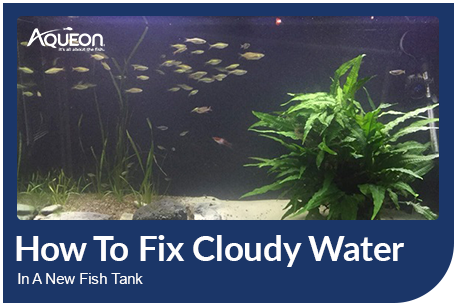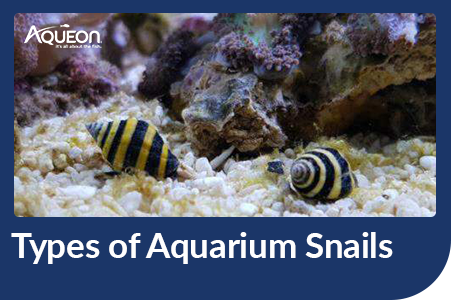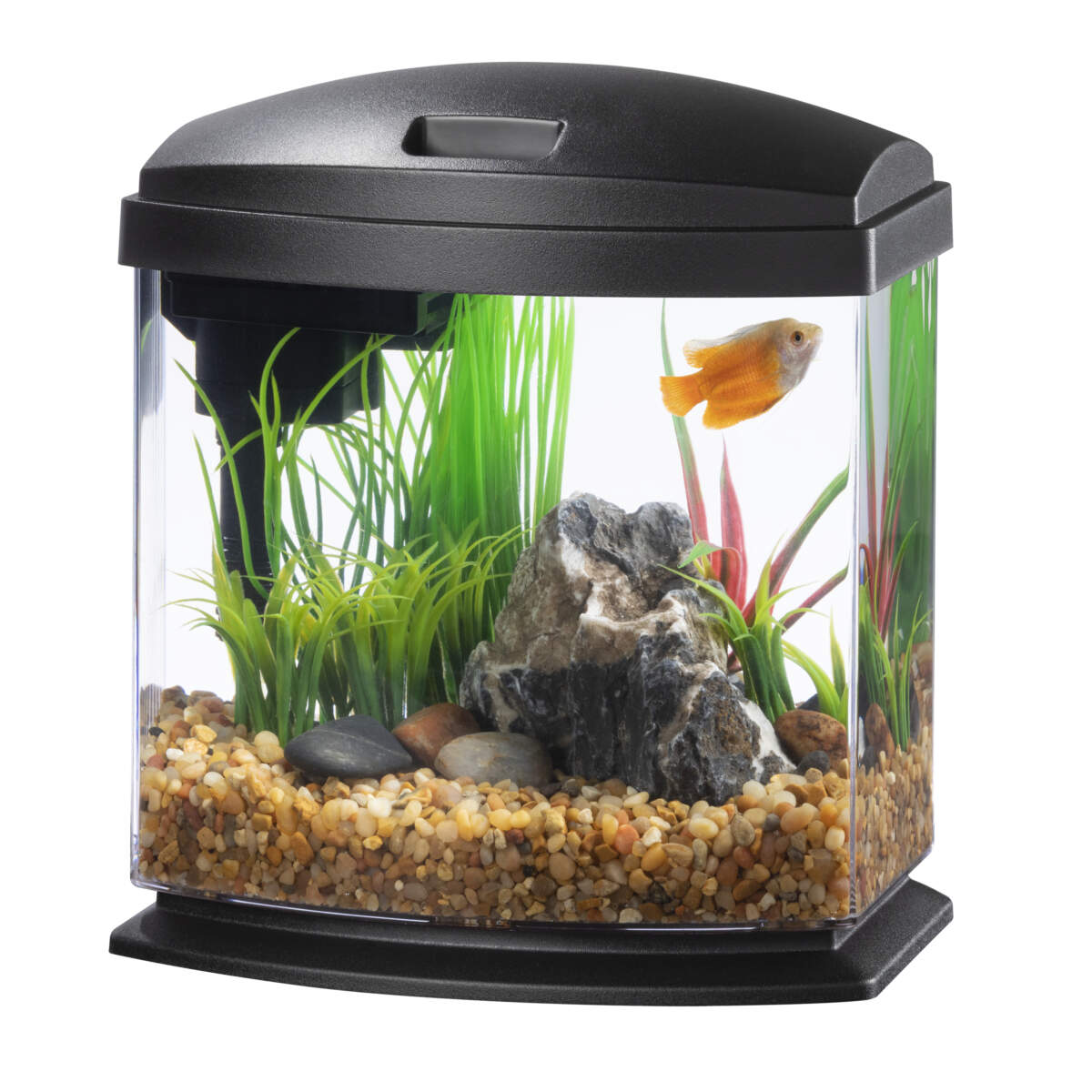Practical Tips for A Healthy Aquarium
Aquarium keeping is a fun and rewarding activity that can provide years of enjoyment, education and even stress relief. When you're new at it, however, it's easy to do things that might not be good for your fish or your stress level.
Like all pets, aquarium fish rely on us for their essential needs in life, from a comfortable place to live to good food, clean water and peaceful neighbors. Fish that are well cared for live long happy lives, put on their best colors, are resistant to sickness and may even breed! Here are some important tips to help you give your fish the best possible living conditions.
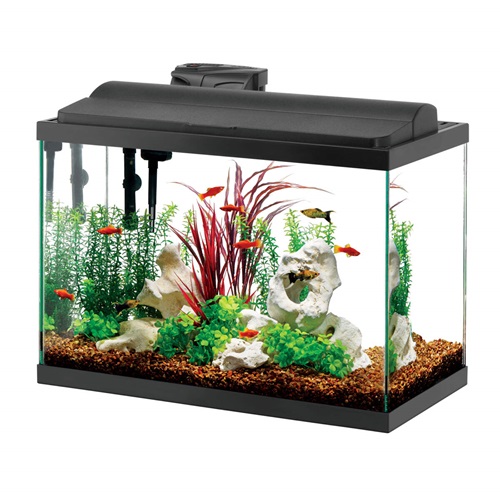
Aquarium Decorations That Make the Perfect Habitat
Simply put, most aquarium fish need structure in their environment to feel safe, establish territory or seek refuge. In a well-decorated aquarium, fish tend to be less shy and live more comfortably. Territorial and semi-aggressive fish tend to quarrel less when there is ample cover. Decorating is also one of the most rewarding aspects of owning an aquarium. It allows you to personalize your aquarium, exercise your creative skills and turn that glass box into living art!
When choosing decorations for your aquarium, always take into consideration the needs of your fish. For example, schooling fish such as tetras, barbs, danios and rasboras enjoy swimming among plants (live or artificial), and choosing darker shades helps accent their bright colors. Place taller plants towards the back of the aquarium to create a backdrop and hide heaters, cords and filter tubes, with progressively shorter plants towards the front. For surface-oriented fish like gouramis, hatchetfish and livebearers, use plants that are taller than the aquarium to create overhangs. Floating plants such as duckweed, hornwort and Salvinia create the same effect and are easy to grow.
Fish that like to "den", such as redtails, rainbow sharks, certain types of cichlids, loaches, catfish, and certain types of plecostomus find refuge in hollow logs, caves, castles and sunken ships. They will often patrol the entrances to their lairs and ward off any fish that come too close. In aquariums with discus or angelfish, decorate with pieces of driftwood angled from the surface down to the bottom to simulate the fallen trees and branches in their natural environment. For Rift Lake cichlids, use plenty of rockwork to simulate the bolder fields found in their natural habitat.
When introducing new additions to an aquarium with territorial fish such as cichlids, it's a good idea to rearrange existing décor to eliminate old territorial boundaries and add new decorations to create additional habitat for the newcomers.
Artificial And Natural Aquarium Decor
Natural décor items include rocks, driftwood, and live aquatic plants. Natural decorations can be used to influence water chemistry to suit the fish in your aquarium. For instance, driftwood can be used to lower pH and alkalinity for Amazonian and Southeast Asian fish. Limestone and other calcium carbonate-based rocks have the opposite effect, raising pH and alkalinity for African Rift Lake and Central American cichlids, as well as livebearers and brackish water fish.
Artificial decorations such as castles, sunken ships, figurines, silk or plastic plants, simulated logs and rocks allow aquarium owners to create themed displays or match surrounding room décor. Do not use metal or any material that might dissolve or release toxins into the water.
Feeding Your Fish
Fish in nature spend much of their day either eating or trying to avoid being eaten. Some fish are omnivorous, meaning they eat different types of food. Others are herbivorous, feeding mostly on plant matter. Which leaves the carnivores, who feed on meaty foods such as insects, worms, crustaceans, amphibians, other fish and even small birds and mammals! Large predatory fish eat less frequently, while herbivores and omnivores graze throughout the day.
What Should You Feed Your Fish & How Often
Knowing what fish eat in nature helps the aquarist choose the proper food and gives some indication of how often they need to be fed. Most fish do best when fed once or twice daily. All food should be consumed in 2 minutes or less. Large predators do not catch food every day in nature, and do not need to be fed every day in the aquarium. Water quality will be better and filter maintenance will be required less often if these fish are fed less frequently. Herbivores and fish that forage should be fed small quantities of food two to three times daily. Aqueon offers a complete line of flake, pellet, tablet and dried whole foods to accommodate the nutritional needs of most ornamental fish.
Fish will normally find food whether it's at the surface, in mid-water or on the bottom. However, presenting it in the way they normally feed is helpful, especially for new arrivals or finicky eaters. For example, feed bottom feeders sinking foods, and flake or floating pellets to surface and mid-water feeders. Sometimes more aggressive feeders may intimidate shy fish, preventing them from getting enough to eat. A solution to this problem is to feed aggressive feeders first and once they are distracted, direct some additional food to sheltered areas where shy fish can eat in peace. Finally, many plecostomus, catfish and knifefish are nocturnal and stay hidden until the lights go out. While some fish may learn to eat during daylight hours, many will stay hidden and may not get enough to eat. Feed these fish after the aquarium light is turned off at night.
Always research the nutritional needs and feeding habits of your fish and provide for them accordingly.
Aquarium Water Changes
Regular partial water changes remove pollutants and growth inhibitors that accumulate over time and help stabilize pH and buffering capacity in your aquarium. They replenish trace elements and important minerals that are used by fish, invertebrates and plants, as well as the biological processes that maintain balance in your aquarium.
There are different philosophies regarding water changes in an aquarium, but the best practice is to do small partial water changes on a regular basis. Most hobbyists change 25% of the water in their aquarium every 2 to 4 weeks, but heavily stocked aquariums, those that house large messy fish or extremely sensitive fish, or aquariums that are fed generously will benefit from more frequent changes. Many "old school" aquarists perform a 10% to 25% water change on their aquariums every week. Changing more than 50% of the water is not recommended.
If your tap water has unusually high pH or alkalinity or is unsuitable for aquarium use due to high nitrates, phosphates or other problems, consider using a Reverse Osmosis Water Purification System. Reverse osmosis (RO) or deionized (DI) water can also be purchased from many local fish stores. When using RO/DI water in freshwater aquariums, always add a trace element supplement such as Aqueon Water Renewal to replace essential minerals and buffers that restore water to its natural state and promote optimum health, color and vigor in your fish and live plants. Bottled water can also be used provided it has acceptable chemistry.
Fish Transportation & Acclimation
Properly acclimating new fish purchases into your aquarium has a significant impact on their long-term health and well-being. Netting, bagging and transporting fish is highly stressful and water quality and chemistry can vary between your local fish store and your aquarium, precautions should be taken to ensure the transition is as stress free as possible. The greater the difference between the store water and your aquarium, and the longer your fish are in transit, the more time and care you should exercise when acclimating them. In addition, some fish are more sensitive to changes and require more gradual acclimation.
Be aware of any significant differences in pH, alkalinity, general hardness and nitrates between your aquarium water and the store where you are purchasing your fish. Go straight home after your fish or marine livestock purchase. In extremely cold or hot weather, transport fish in an insulated cooler or Styrofoam shipping container to avoid excessive temperature fluctuations. Do not place fish in the trunk of your car. Finally, be sure to research the fish you are buying in advance to ensure conditions in your aquarium are appropriate for them.
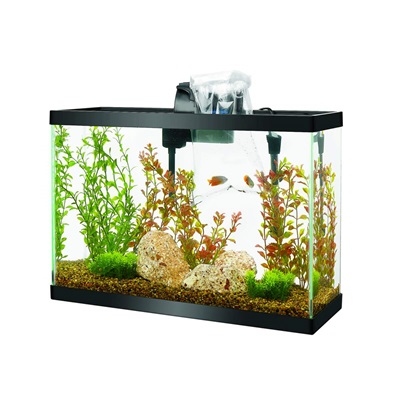
Suggested Fish Acclimation Techniques:
Float Method: Ideal for Most New Purchases
Step 1: Turn off the aquarium light and open the cover.
Step 2:Float the closed bag of new fish in your aquarium for 10 to 15 minutes for temperature adjustment.
Step 3: Open the bag and roll the top down to form a "cuff", keeping the bag open to allow air to enter. Do not secure the bag by hanging it over the edge of the aquarium and closing the cover, as this will cut off the air supply.
Step 4: Add a small amount of aquarium water to the bag. Be careful not to allow water from the bag to spill into your aquarium.
Step 5: Repeat this procedure 2 or 3 times over a 15 to 20-minute period.
Step 6: Gently net the fish out of the bag and place them in the aquarium.
Step 7: Dispose of water from the bag; do not put it in your aquarium!
Step 8: Add a small amount of Aqueon Water Conditioner to the aquarium to restore the new fish's protective slime coating lost in netting and transportation.
Step 9: Allow fish to settle into their new home for a few hours before turning on the aquarium light.
Drip Method: For Large Fish or Longer Acclimation Periods
Step 1: A drip line can be constructed using a 12" piece of 3/16" rigid plastic air tubing bent over a heat source into an upside-down "J", connected to a section of flexible air hose with a plastic air control valve at the other end.
Step 2: Place new fish and water in a clean bucket or suitable container. Place a towel over the bucket to calm the fish and prevent them from jumping out.
Step 3: Hang the "J" tube on the aquarium and start a siphon into the bucket. Adjust the valve to create a flow rate ranging from a fast drip to a slow dribble into the bucket.
Step 4: Gently aerate the water in the bucket if necessary to prevent oxygen depletion.
Step 5: Allow the water volume in the bucket to double or triple.
Step 6: Turn off the aquarium light and remove the drip line. Gently net the new fish into your aquarium. Dispose of water in the bucket.
Step 7: Top off the aquarium and add a small amount of Aqueon Water Conditioner to restore fish's protective slime coating lost in netting and transportation.
Step 8: Allow fish to settle into their new home for a few hours before turning on the aquarium light.


